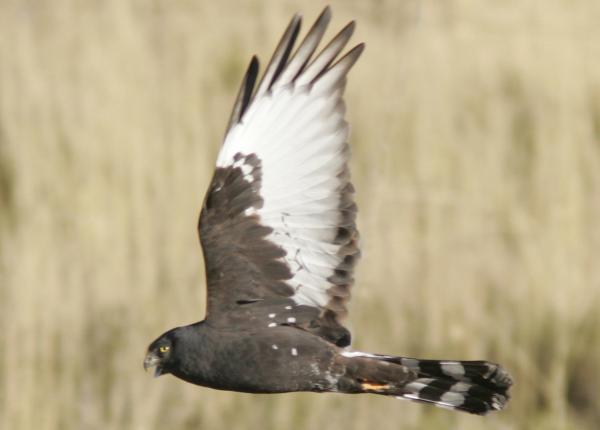Did You Know?
- The Black Harrier is reportedly not as dependent on wetlands as other harrier species.
- This species' population may have declined by 85% in the past century
How The Peregrine Fund is Helping
Though The Peregrine Fund doesn't work directly with Black Harriers, our efforts in scientific research, habitat conservation, education, and community development help conserve raptors on a global scale. We also supply literature to researchers from our avian research library, which helps scientists around the world gather and share important information on raptor conservation.We also support the Global Raptor Impact Network which gives raptor researchers tools to more efficiently conduct their own studies while contributing to a global program. GRIN also provides citizen scientists a way to participate in raptor science and conservation.
Where They Live
Found throughout much of Southern Africa, the Black Harrier inhabits scrub- and bush lands, interspersed with marshes and sedge lands, and, even some cereal croplands, floodplains, grasslands, coastal dune thickets, and even semi-desert areas, It is generally found from sea level to as high as 2,500 m.
What They Do
This raptor can be seen perching on the ground, or on a post or other low perch. Like other harriers, the Black Harrier has a facial disk composed of feathers that form a circle around its face. The disk can be lifted or lowered at will. When the feathers of the facial disk are raised, they help direct sounds to the bird's ears. To see how this works, cup your hands behind your ears and listen. You might notice that whatever you are listening to seems louder. When a Black Harrier is hunting over dense grass or other vegetation, it listens for the sounds of its prey scurrying below and knows where to aim its sharp talons.
Why They Need our Help
The Black Harrier is considered one of the rarest raptor species in the world. It may have lost over 50% of its core breeding habitat in the last century as a result of land use changes in the fynbos biome of its stronghold in southwestern Africa. Conversion of grasslands to farmlands, overgrazing, draining of wetlands, poisoning effects of pesticide use in agricultural areas, and collisions with vehicles are all threats this beautiful raptor species faces.
What They Eat
Like other harrier species, the Black Harrier has a wide range of prey that it will consume. It will hunt small mammals (such as rodents), small birds and their nestlings, reptiles, amphibians, and insects. It has also been documented feeding on carrion - animals that have died from other causes, such as being hit by a car. The Black Harrier flies low, less than 5 m off the ground, as it searches for mice by slow quartering and a lightning-like strike into short vegetation or catching small birds after a short chase.
Nest, Eggs, and Young
The Black Harrier constructs a nest platform of reed stems and sticks often lined with wool and hair. They usually build their nest in a reed bed or on the ground in other moist vegetation, and sometimes in drier areas near wetlands. Both the male and female work together to build their nest. The female will lay between 3-4 eggs, which are bluish-white. The incubation period is 34 days, and the female handles all of the incubation duties while the male is responsible for providing food for himself and the female. After the nestlings hatch, the male will continue to bring food to the nest, though the female is charge of feeding the young. When the nestlings hatch, they are covered in fluffy white down. But they will grow quickly will take flight about 36 days after hatching.
Black Harrier and The World Center for Birds of Prey
Though the World Center for Birds of Prey is far from Black Harrier habitat, another incredible harrier can be seen from our Center. As you drive up to the entrance, watch for Northern Harriers soaring low over the grassy fields on either side of the road. When walking our nature trail, be sure to look for these graceful, agile raptors. An interpretive sign at the end of the trail teaches you how to identify a raptor based on its silhouette.
References:
Global Raptor Information Network. 2023. Species account: Black Harrier Circus maurus. Downloaded from http://www.globalraptors.org on 23 Jun. 2023
Kemp, A. C., G. M. Kirwan, D. A. Christie, and C. J. Sharpe (2020). Black Harrier (Circus maurus), version 1.0. In Birds of the World (J. del Hoyo, A. Elliott, J. Sargatal, D. A. Christie, and E. de Juana, Editors). Cornell Lab of Ornithology, Ithaca, NY, USA. https://doi.org/10.2173/bow.blahar1.01










